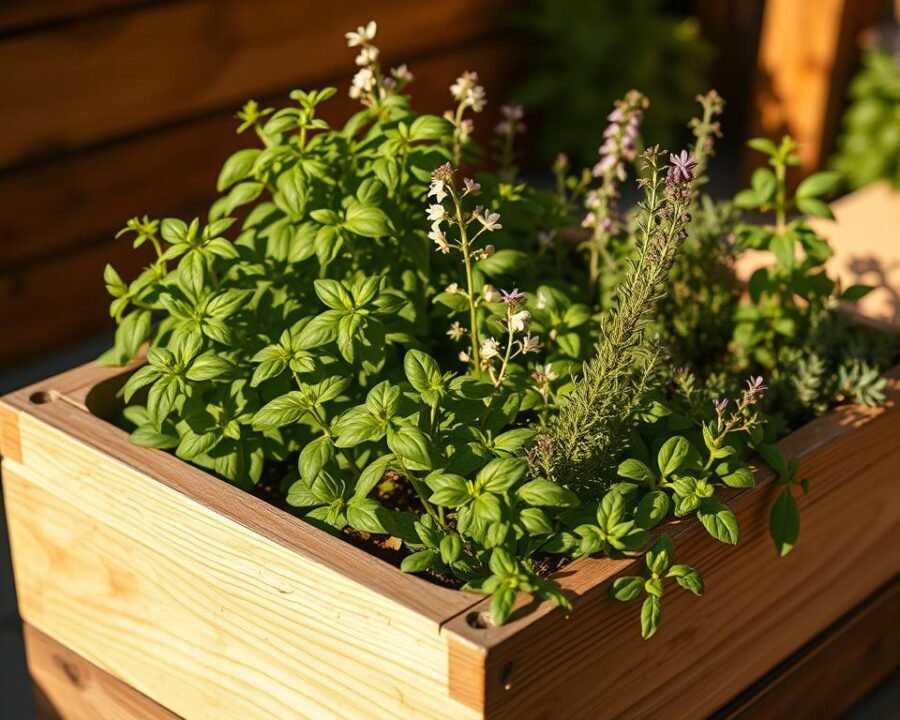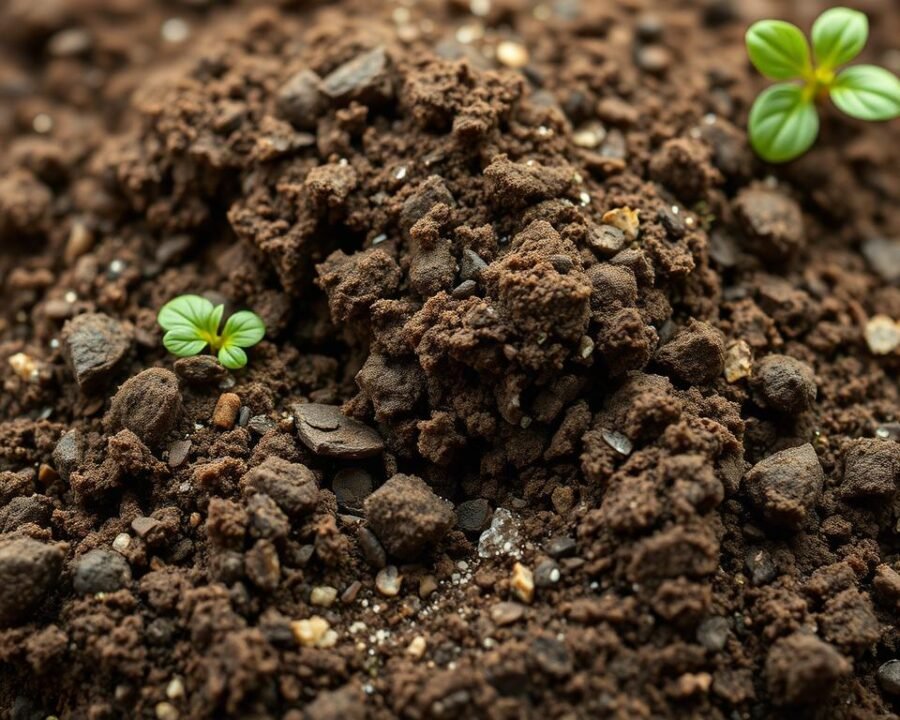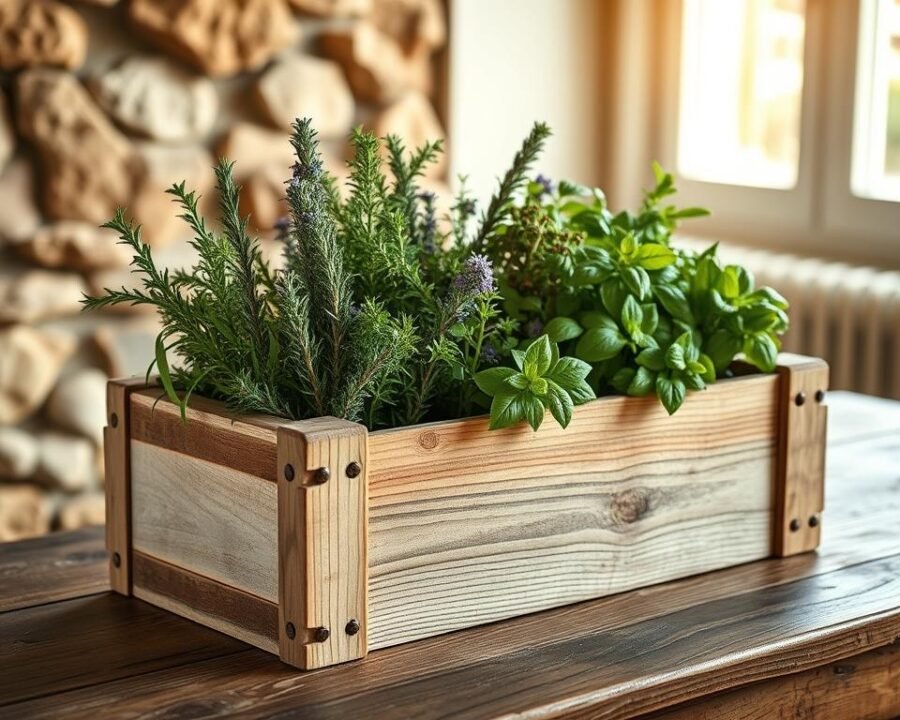Fresh flavors at your fingertips—that’s the magic of a thriving herb garden. Whether you live in a cozy apartment or have a sprawling backyard, container gardening brings nature’s bounty closer to home. No more wilted store-bought bundles or last-minute grocery runs. Just snip what you need, right when you need it.
Urban dwellers and seasoned gardeners alike are turning to compact herbs in creative setups. It’s sustainable, cost-effective, and surprisingly simple. With the right tips, you’ll enjoy basil, mint, or rosemary year-round—no green thumb required.
In this guide, we’ll walk you through choosing the perfect spot, pairing plants wisely, and keeping your garden lush with minimal effort. Let’s dig in!
Key Takeaways
- Ideal for small spaces, urban settings, or beginners.
- Fresh, homegrown flavors save money and reduce waste.
- Year-round access to your favorite seasonings.
- Smart companion planting boosts growth naturally.
- Low-maintenance techniques ensure lasting success.
Why Grow a Herb Planter Box?
Transform your meals with vibrant flavors picked straight from your windowsill. A herb garden isn’t just a trend—it’s a game-changer for home cooks and eco-conscious lifestyles. Here’s why it’s worth the effort.
Fresh Herbs at Your Fingertips
Imagine adding basil to pasta or mint to tea without a store run. With a planter nearby, you’ll always have herbs like rosemary or cilantro ready. No more wilted bundles or last-minute dashes to the market.
Urban gardener Mia K. shares:
“My kitchen windowsill garden saves me time and makes every dish taste fresher.”
Perfect for Small Spaces
Limited space? No problem. Herbs thrive in 6–8″ pots on balconies, patios, or even shelves. The EarthBox Junior system fits compact areas while yielding big results.
- Chives and thyme: Ideal for shallow containers.
- Vertical planters: Maximize tight corners.
Cost-Effective and Sustainable
Ditch the $3–$5 grocery packs. A single herb garden can save $34+ annually. Plus, you’ll cut plastic waste and food miles—one snip at a time.
Pro tip: Pair drought-tolerant sage with moisture-loving parsley to reduce water use.
How to Grow a Herb Planter Box Everyone Is Using
Whether you’re growing herbs on a balcony or windowsill, placement matters. Some crave full sunlight, while others prefer shade. Pairing the right plants boosts growth and simplifies care.

Find the Sweet Spot for Light
Basil demands 6+ hours of direct sun daily. Mint thrives with just 4–6 hours. Track patterns with sun mapping—note how light moves across your space. Rotate pots seasonally for temperature-sensitive varieties.
Pro tip: Use the EarthBox system to optimize exposure in tight corners.
Companion Planting Made Simple
Rosemary and thyme pair well—both are drought-tolerant. Basil and parsley? They’ll compete for water. Avoid grouping moisture-lovers with dry-soil herbs like sage.
| Herb Group | Examples | Best Partners |
|---|---|---|
| Drought-Tolerant | Rosemary, thyme, oregano | Group together; avoid wet soil |
| Moisture-Loving | Basil, cilantro, mint | Separate containers or vertical stacks |
Short on space grow vertically? Stack planters or use wall pockets. Lemongrass and lemon verbena need winter protection—keep them movable.
Selecting the Perfect Planter Box
The right container makes all the difference for healthy, happy plants. From terra cotta to plastic, each material affects moisture and root growth. Let’s break down what works best.

Size and Depth Requirements
Rosemary needs 12″ deep pots, while basil thrives in 10″. Shallow-rooted chives manage with 6″. Match depth to your herbs’ needs—cramped roots stunt growth.
Material Options: Terra Cotta, Wood, or Plastic?
Terra cotta breathes but dries fast. Plastic retains moisture, ideal for thirsty herbs like mint. Wood offers insulation but may rot over time.
| Material | Best For | Drawbacks |
|---|---|---|
| Terra Cotta | Drought-tolerant herbs (rosemary, thyme) | Heavy; cracks in frost |
| Plastic | Moisture-loving herbs (basil, cilantro) | Less breathable |
| Wood | Balanced moisture (parsley, oregano) | Requires sealing |
The Importance of Drainage Holes
Without drainage holes, roots drown. Drill ¼” holes in the bottom if missing. Avoid decorative planters without them—root rot lurks in standing water.
Pro tip: Elevate pots with pebbles to boost airflow. The EarthBox’s self-watering design solves drainage dilemmas for beginners.
Preparing the Ideal Soil Mix
The secret to lush, flavorful plants starts beneath the surface—with the right soil blend. Unlike garden beds, containers demand a mix that balances moisture, drainage, and nutrients. Get this foundation wrong, and even the hardiest herbs struggle.

Why Potting Soil Beats Garden Soil
Garden soil is too dense for pots, suffocating roots. Potting mixes, though, are light and fluffy. Test the difference: Fill a jar with each, add water, and shake. Garden soil settles into thick layers, while potting mix stays loose.
Pro tip: EarthBox kits include dolomite lime to stabilize pH (6.0–7.0). No kit? Add perlite or vermiculite to store-bought mixes for better airflow.
Balancing Drainage and Nutrients
Herbs hate “wet feet.” A DIY blend of 60% potting soil, 25% perlite, and 15% compost keeps conditions ideal. For pH testing, cheap meter strips work—just avoid extremes.
- Root development: Healthy mixes yield white, fibrous roots; poor soils cause stunted, brown ones.
- Organic fertilizers: Dr. Earth or Espoma brands feed plants slowly without chemical burns.
“My herbs doubled in size after switching to a perlite-rich mix. The difference in flavor was unbelievable.”
Planting Your Herb Garden
The journey from seed to harvest begins with smart planting choices. Whether you’re sowing seeds or nurturing store-bought plants, timing and technique matter. Let’s dig into the essentials.
Starting from Seeds vs. Store-Bought Plants
Seeds offer variety and cost savings but need patience. Begin 6–8 weeks before the last frost for a spring head start. Baker Creek and High Mowing Organic Seeds are trusted sources for non-GMO options.
Prefer convenience? Local nurseries often stock healthier plants than big-box stores. Ask about growing practices to avoid herbicide-treated stock. Pro tip: Look for vibrant leaves and sturdy stems—signs of a strong start.
“I saved 30% by starting basil from seed, and the flavor was worth the wait.”
Spacing and Arrangement Tips
Crowding stifles growth. Allow 8″ between basil plants, 4″ for chives. Vertical planters maximize space for trailing varieties like thyme.
- Succession planting: Sow new seeds every 3 weeks for continuous harvests.
- Transplant shock: Water deeply after moving plants and shade them for 2 days.
Pair herbs with similar needs—rosemary and sage thrive together, while mint demands its own pot. A little planning ensures a lush, productive garden.
Caring for Your Herb Planter Box
Keeping your plants thriving requires simple but strategic care. Tailor routines to each herb’s needs, and they’ll reward you with bold flavors year-round. Let’s explore the essentials—water, sunlight, and timely trimming.
Watering Needs: Moisture-Loving vs. Drought-Tolerant Herbs
Not all greens sip the same. Basil craves consistently damp soil, while rosemary thrives on neglect. Use the finger test—poke soil an inch deep. If dry, it’s time to hydrate.
Group herbs by water preferences to create microclimates:
- Thirsty trio: Basil, cilantro, and mint (water every 2–3 days).
- Desert dwellers: Rosemary, thyme (weekly sips suffice).
“Self-watering planters saved my basil during a heatwave. No more guesswork!”
Sunlight Requirements: Full Sun vs. Partial Shade
Most herbs adore 6+ hours of direct sunlight. But delicate mint and parsley prefer dappled shade. In winter, supplement with LED grow lights (12–14 hours daily).
Prevent cilantro from bolting in summer with a 30% shade cloth. Rotate pots weekly for even exposure.
Pruning and Harvesting for Continuous Growth
Regular pruning prevents leggy stems. Snip basil weekly just above leaf nodes. Woody herbs like sage need monthly trims to stay bushy.
Preserve extras:
- Freezing: Chop and freeze in olive oil cubes.
- Drying: Hang thyme upside-down in a dark, dry spot.
Conclusion
Nothing beats the joy of plucking fresh herbs right from your kitchen. A thriving herb garden transforms meals and connects you to nature—one snip at a time.
Start small with basil, mint, and thyme. These forgiving plants flourish in any sunny spot. Share cuttings with neighbors to spread the green love.
Ready to level up? Explore hydroponics or try the EarthBox system for foolproof results. Whether you want grow a windowsill patch or a lush indoor oasis, the rewards are endless.
Your home deserves flavors this vibrant. Grab a pot, pick your favorites, and let’s get planting!
